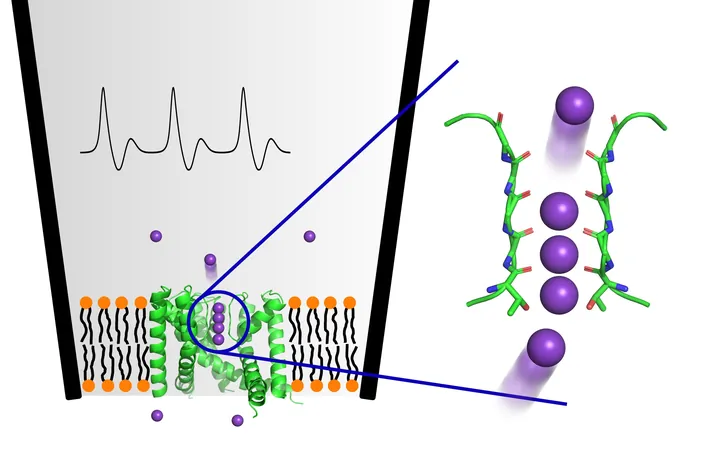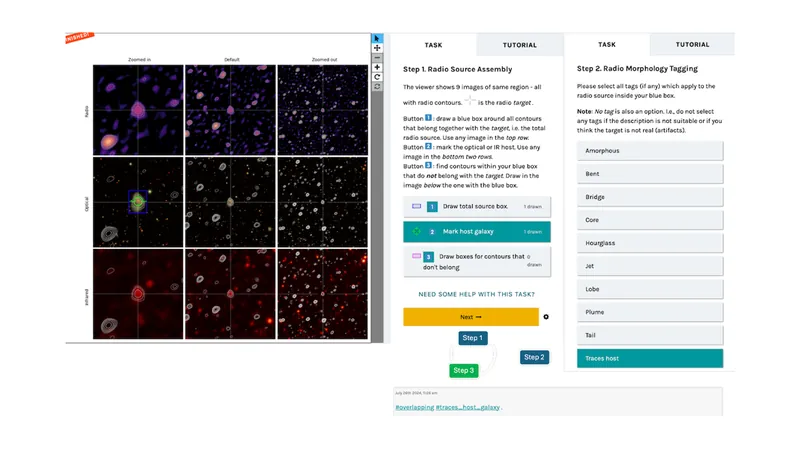
Unlocking the Secrets of Potassium: How Ions Dance Through Cellular Channels
2025-05-21
Author: John Tan
The Vital Role of Ion Channels in Cellular Communication
Ion channels are crucial players in the intricate communication networks of our bodies, acting as gateways in the outer membranes of nearly all cell types. Essential processes such as blood flow, immune responses, and nerve signal transmission rely on these specialized pore-forming proteins to relay information effectively.
Pioneering Discoveries by Neher and Sakmann
In 1976, researchers Erwin Neher and Bert Sakmann revolutionized our understanding of these channels with their invention of the patch clamp technique at the Max Planck Institute. This groundbreaking method enabled the measurement of eerily small electrical currents flowing through individual ion channels in nerve cells, earning them the Nobel Prize in Physiology or Medicine in 1991 for their exceptional contribution.
Simulating the Unseen with Molecular Dynamics
While patch clamp measurements are incredibly precise, they fall short in detailing the mechanisms through which ions traverse the channels. Enter molecular dynamics simulations, a powerful tool that can mimic these experimental setups at an atomic level. Bert de Groot from the MPI for Multidisciplinary Sciences explains, "These simulations allow us to observe processes that elude direct experimentation."
Achieving Precision Nearly Five Decades Later
In a remarkable achievement, de Groot's team, in collaboration with Queen Mary University London researchers, managed to refine these molecular dynamics simulations. Their calculations of ion currents through channels matched perfectly with the experimental data obtained via patch clamp methods, a feat that remained elusive for almost 50 years.
Revealing the Mysteries of Potassium Flow
The enhanced simulations vividly illustrate how potassium ions flow seamlessly through potassium channels while blocking others. Historically, it was believed that water molecules separated the potassium ions within the channel, but de Groot's latest findings reveal a surprising arrangement: up to four potassium ions can align closely like pearls on a string.
A Surprising Arrangement with Major Implications
This surprising configuration is pivotal for the channel's efficiency and its selectivity for potassium. As Chenggong Hui, the study's lead author points out, "This unusual alignment allows for effective ion flow while actively preventing smaller ions like sodium from entering the channel."
Implications for Pharmaceutical Research
Given that ion channels are promising targets for drug development, these insights into their function are invaluable for shaping future therapeutic strategies. Understanding how these channels operate opens new avenues in medicinal research, particularly in tailoring treatments based on the selective properties of these critical cellular gateways.





 Brasil (PT)
Brasil (PT)
 Canada (EN)
Canada (EN)
 Chile (ES)
Chile (ES)
 Česko (CS)
Česko (CS)
 대한민국 (KO)
대한민국 (KO)
 España (ES)
España (ES)
 France (FR)
France (FR)
 Hong Kong (EN)
Hong Kong (EN)
 Italia (IT)
Italia (IT)
 日本 (JA)
日本 (JA)
 Magyarország (HU)
Magyarország (HU)
 Norge (NO)
Norge (NO)
 Polska (PL)
Polska (PL)
 Schweiz (DE)
Schweiz (DE)
 Singapore (EN)
Singapore (EN)
 Sverige (SV)
Sverige (SV)
 Suomi (FI)
Suomi (FI)
 Türkiye (TR)
Türkiye (TR)
 الإمارات العربية المتحدة (AR)
الإمارات العربية المتحدة (AR)